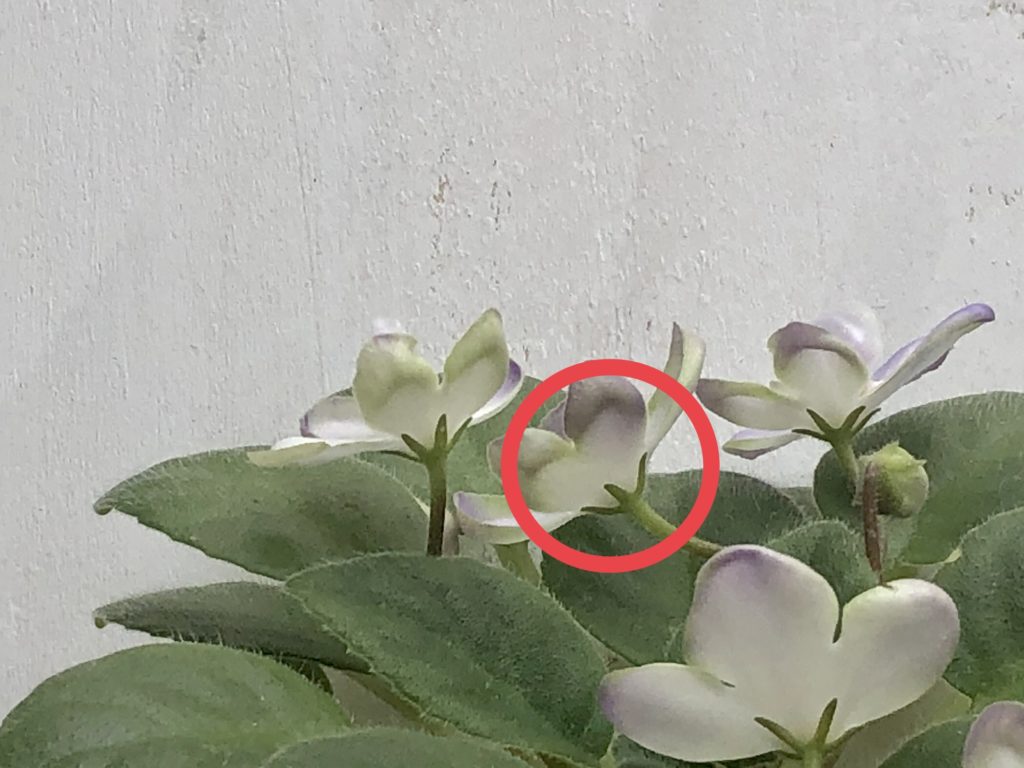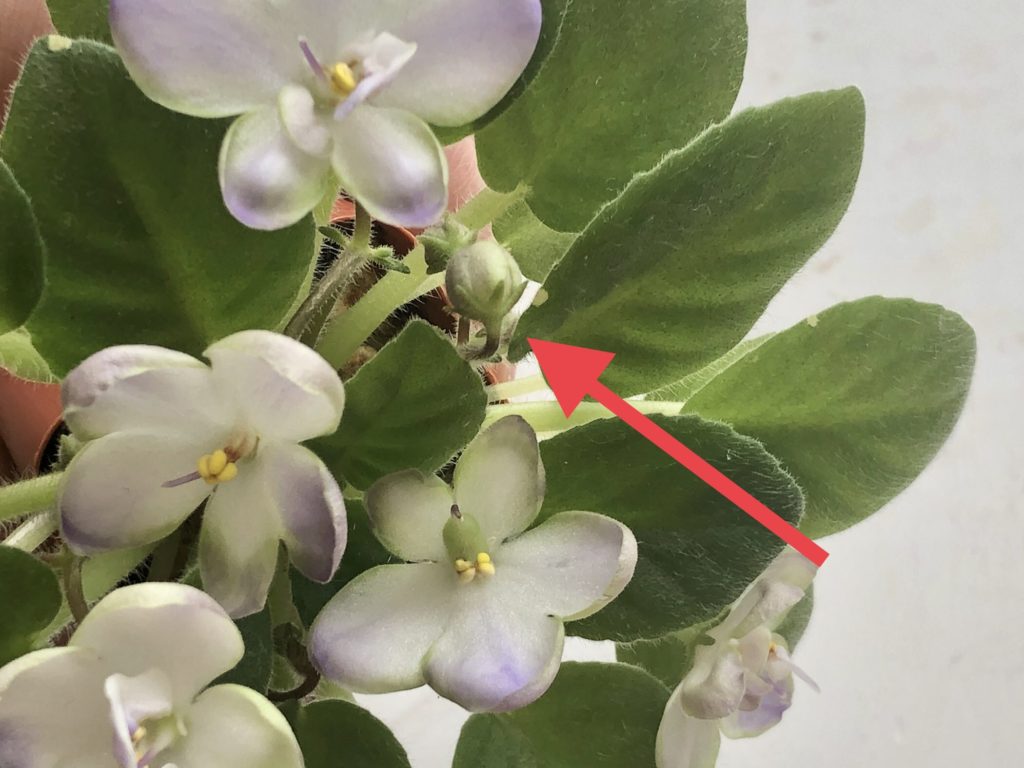Droppers vs stick-tight flowers
African violets that drop their blooms are often called ‘droppers’ in online plant communities. What does a ‘dropper’ mean in African violet jargon?
It means that a bloom doesn’t stay on a plant. It opens, matures, but eventually, petals with pollen sacks slide off, leaving a pistil behind. The dropped flower wilts and dries after that.

On the contrary, when we say that a certain African violet has stick-tight (or sticktite) flowers, we mean that blooms are firmly connected and won’t drop. They will wilt and dry on the plant.
What is wrong with droppers?
Nothing whatsoever. Originally, all species African violets and the first named varieties were all droppers. Many vintage varieties that are still grown in collections all over the world are droppers.
According to the African Violet Society of America (AVSA), all violets before 1939 had single dropper flowers. That’s when the first double and semidouble violets appeared. These blooms were stick-tight. Single blooms kept dropping though.
Decades later, in 1965 the first-ever single stick-tight African violet flower was discovered by Reinhold Holtcamp Sr. who grew 20 000 violets seedlings in order to find just one with single stick-tight flowers. Its name was Rhapsodie Elfriede and it completely changed the African violet world.
Nowadays a vast majority of commercial varieties and most of the ‘collectables’ have stick-tight flowers. Why is that?
- Flowers stay on a plant much longer, ensuring a large number of open blooms at the same time.
- They don’t drop and don’t rot somewhere on a shelf, making care easier.
That’s why most of modern hybridisers cull dropper seedlings on the spot.
How can I identify a dropper?
You can have a look at a calyx. It looks different for droppers and stick-tight flowers. Droppers usually have cup-like calyx and you can clearly see that a flower is, in fact, separate from it. Stick-tight blooms have a flatter, almost plate-like calyx. The same is true for ready to open buds – you can predict ‘dropper or not’ with enough accuracy by looking at calyx.





